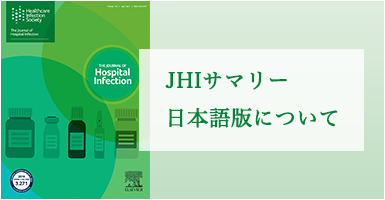乱流混合換気および一方向流型換気を備えた手術室において再使用可能な手術着および単回使用の手術着を使用した場合の空中細菌数の比較★
Comparison of number of airborne bacteria in operating rooms with turbulent mixing ventilation and unidirectional airflow when using reusable scrub suits and single-use scrub suits A. Tammelin*, P. Kylmänen, A. Samuelsson *Karolinska Institutet, Sweden Journal of Hospital Infection (2023) 135, 119-124
緒論
手術室において空中細菌数を減らすことが手術部位感染症を予防する 1 つの方法である。
目的
乱流混合換気および一方向流型換気(いずれも送気量 2,600 L/秒)を備えた 2 つの手術室において、スタッフが混合素材(浸透率≦ 300 コロニー形成単位(CFU))製の再使用可能な手術着またはポリプロピレン(浸透率≦ 100 CFU)製の単回使用の手術着を使用した場合の手術手技中の空中細菌数を調査すること。
材料と方法
乱流混合換気室では、スタッフが再使用可能な手術着を着用して 8 つの手技を、また単回使用の手術着を着用して 7 つの手技を実施する間に CFU/m3 を測定した。一方向流型換気室では、スタッフが再使用可能な手術着を着用して 7 つの手技を実施する間に CFU/m3 を測定した。
結果
乱流混合換気室でのCFU/m3 の平均値は、スタッフが再使用可能な手術着を着用した場合は 1.3 ~ 10.8、単回使用の手術着を着用した場合は 0.8 ~ 4.0 であった(P < 0.01)。一方向流型換気室でのCFU/m3 の平均値は、スタッフが再使用可能な手術着を着用した場合は 0.2 ~ 4.5 であった。2 つの手術室において再使用可能な手術着で認められた差は有意であった(P < 0.01)。
結論
換気方法は、送気量が多いとしても、閉鎖性の低い手術着をスタッフが着用する場合は、CFU 値に影響を及ぼす。おそらく、乱流混合換気室において緊密な素材で作られた手術着を使用することは CFU 値を低下させることになり、これによって一方向流型換気室において保護性の低い手術着により達成されるのと同じ値が得られるだろう。
監訳者コメント:
ポリプロピレン製(浸透率≦ 100 CFU)の単回使用の手術着を着用するか、一方向流型換気室を使用することで、空中細菌数を減らすことができるかもしれない。
同カテゴリの記事
Airborne SARS-CoV-2 in home and hospital environments investigated with a high-powered air sampler P. de Man*, M.A. Ortiz, P.M. Bluyssen, S.J. de Man, M-J. Rentmeester, M. van der Vliet, E-J. Wils, D.S.Y. Ong *Franciscus Gasthuis & Vlietland, the Netherlands Journal of Hospital Infection (2022) 119, 126-131
An in vitro investigation into the release of fugitive medical aerosols into the environment during manual ventilation
M. Mac Giolla Eain*, M. Joyce, A. O’Sullivan, J.A. McGrath, R. MacLoughlin
*Aerogen, IDA Business Park, Ireland
Journal of Hospital Infection (2021) 108, 135-141
Incidence and risk factors of bacterial sepsis and invasive fungal infection in neonates and infants requiring major surgery: an Italian multicentre prospective study C. Auriti*, D.U. De Rose, A. Santisi, L. Martini, M.P. Ronchetti, L. Ravà, V. Antenucci, P. Bernaschi, L. Serafini, S. Catarzi, P. Fiorini, P. Betta, M.G. Scuderi, V. Di Benedetto, S. Ferrari, M. Maino, F. Cavigioli, I. Cocchi, M. Giuffré, E. Bonanno, C. Tzialla, J. Bua, L. Pugni, B. Della Torre, G. Nardella, D. Mazzeo, P. Manzoni, I. Capolupo, M. Ciofi degli Atti, A. Dotta, M. Stronati, M. Raponi, F. Mosca, P. Bagolan, on behalf of the Study Group of Neonatal Infectious Diseases of the Italian Society of Neonatology (SIN) *‘Bambino Gesù’ Children’s Hospital IRCCS, Italy Journal of Hospital Infection (2022) 130, 122-130
Ethanol and isopropanol inactivation of human coronavirus on hard surfaces
- Meyers*, R. Kass, D. Goldenberg, J. Milici, S. Alam, R. Robison
*Pennsylvania State College of Medicine, USA
Journal of Hospital Infection (2021) 107, 45-49
Effectiveness of a SARS-CoV-2 infection prevention model in elective surgery patients – a prospective study: does universal screening make sense? O. Moreno-Pérez*, E. Merino, P. Chico-Sánchez, P. Gras-Valentí, J. Sánchez-Payá, on behalf of the COVID19-ALC Research Group *Alicante General University Hospitale-Alicante Institute for Health and Biomedical Research, Spain Journal of Hospital Infection (2021) 115, 27-31



